Huawei Watch GT Runner
Two-minute review
The Huawei Watch GT Runner is very similar in design and features to the Huawei Watch GT 3, which was released just a few months earlier. It's lighter and more breathable though, with a few significant tweaks like a relocated GPS aerial that's now better positioned to pick up a signal as quickly as possible.
This is a sports watch best suited to new runners who want to prepare for their first event, and those who are running regularly, but have noticed their progress stall in recent months. It offers an excellent suite of training tools to help you balance training and recovery, and Huawei's 'AI coach' can create a personalized plan to help you hit your next goal – whether it's running your first 5K, building up to a 10k, or setting a new personal best.
GPS tracking isn't quite as accurate as we might have liked, but the Watch GT Runner's heart rate monitoring is on a par with watches costing several times as much, which is excellent news for anyone who wants to add some gym-based cross-training to their training program.
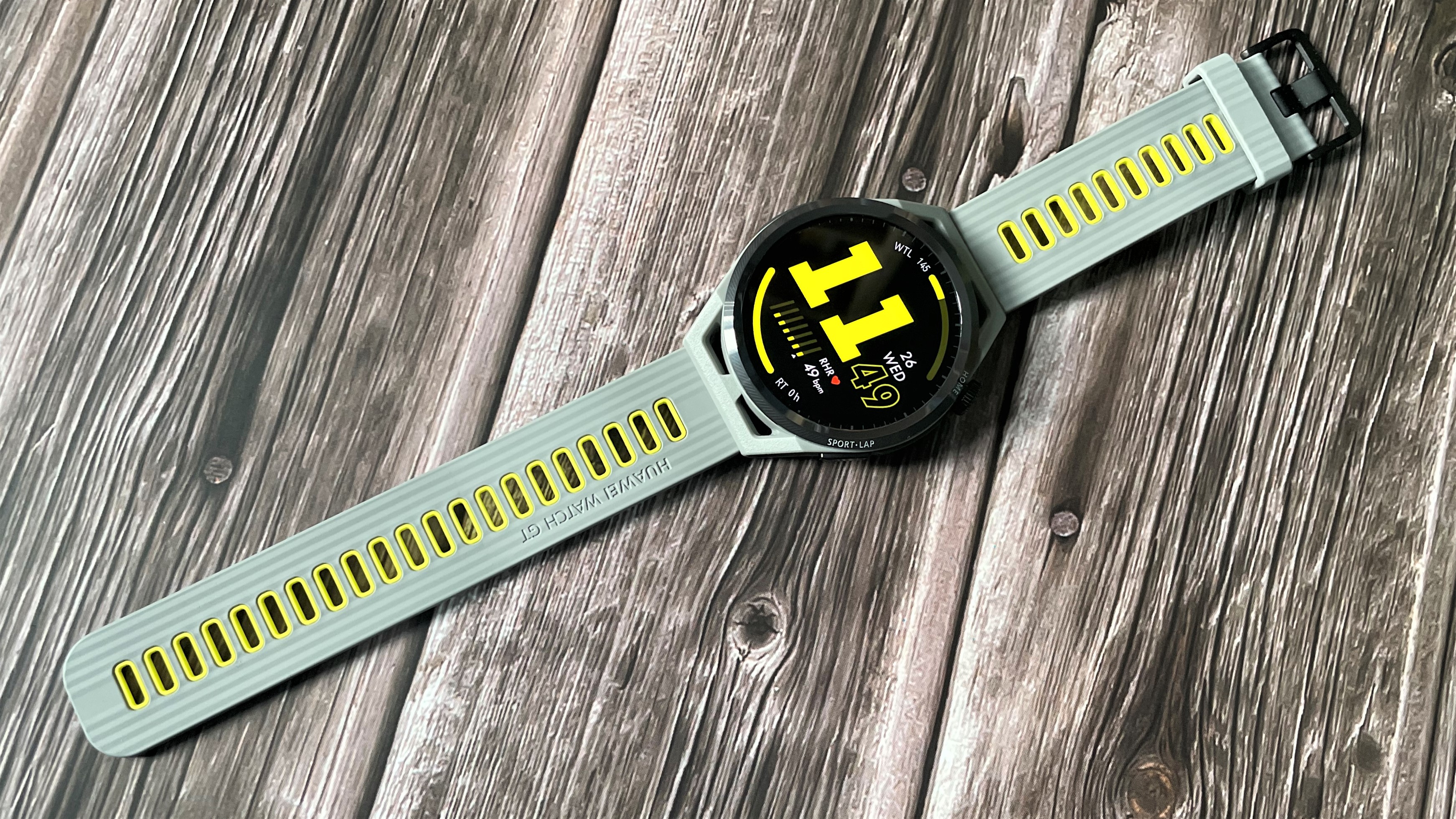
It also offers SpO2 and stress tracking, and its sleep monitoring is particularly impressive, even picking up naps and factoring into your daily energy and recovery stats. All of this data is presented clearly in the Huawei Health mobile app, where you can tailor the watch's settings to download additional apps or tweak health monitoring settings.
Battery life is very impressive, particularly for an AMOLED smartwatch, and our review unit lost less than half its charge during a week of regular use with daily workouts, exceeding Huawei's estimates.
Unfortunately, the Watch GT Runner isn't likely to go on sale in the US any time soon. If you're looking for a similarly specced sports watch in North America, we'd recommend taking a look at the Coros Pace 2, Polar Vantage V2, and Garmin Venu 2 (or the Venu 2 Plus if you also want to make calls from your wrist).
Price and release date
- Released internationally January 2022
- Mid-range price tag
The Huawei Watch GT Runner began rolling out internationally on January 26, 2022. It's priced at €299 (about $340 / £250 / AU$470), which is roughly the same as Garmin's mid-level running watch, the Garmin Forerunner 245.
It's also around the same price as the Suunto 5 Peak, which released just a few days earlier, and is a similarly specced lightweight running watch.
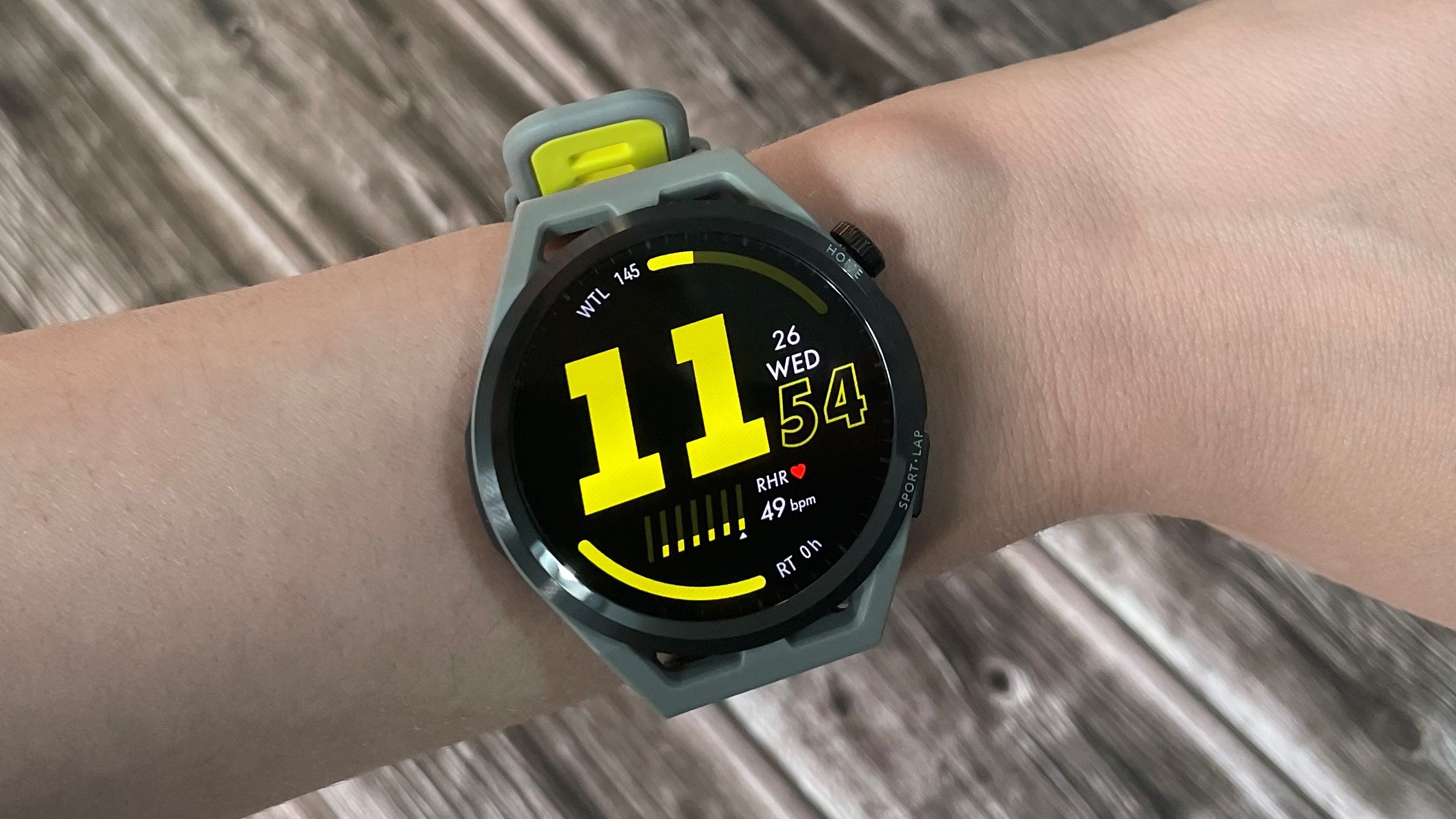
Design
- Lightweight design and materials
- GPS aerial built into upper lug
- 1.43in AMOLED touchscreen
The Huawei Watch GT Runner follows a similar design to other devices in the GT series, but with a few significant tweaks to make it lighter and more comfortable to wear during intense workouts.
Unlike the Watch GT 3, which arrived just a couple of months earlier, there's no metal bezel here, and no curved glass to give the illusion of a larger display. Instead, this is a watch designed for practicality. It has an resin case that comes in either gray or black, and the edge of the screen is protected by a ceramic bezel.
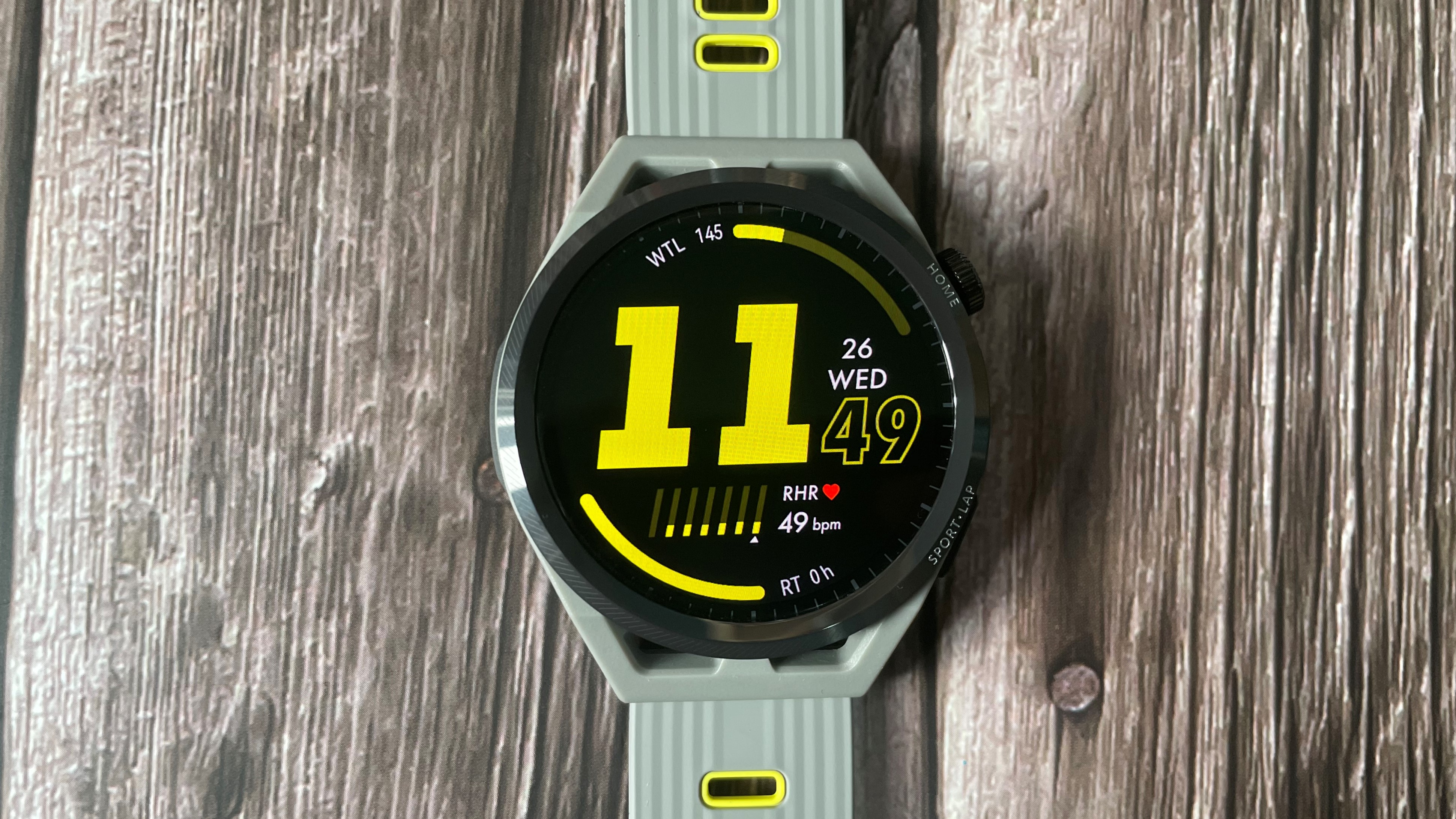
The case measures 46mm in diameter, and weighs in at 38.5g. Our review unit was 51g with the strap attached, which is pretty light, and roughly the same as the Garmin Forerunner 55. However, if you want something feather-light then you should investigate the Suunto 5 Peak, which is just 39g including the strap.
Huawei claims that the Watch GT Runner is inspired by the air intakes on a supercar. That translates to lugs that have are hollow rather than solid chunks of plastic, allowing for better airflow around your wrist. The upper lug also contains the watch's GPS aerial, which has been relocated to allow for better reception.
On the right-hand edge you'll find a titanium alloy crown, which can be pressed to open the main menu or return to the home screen, and twisted to scroll through options. Below this is a single button, which is used to select settings and view stats.
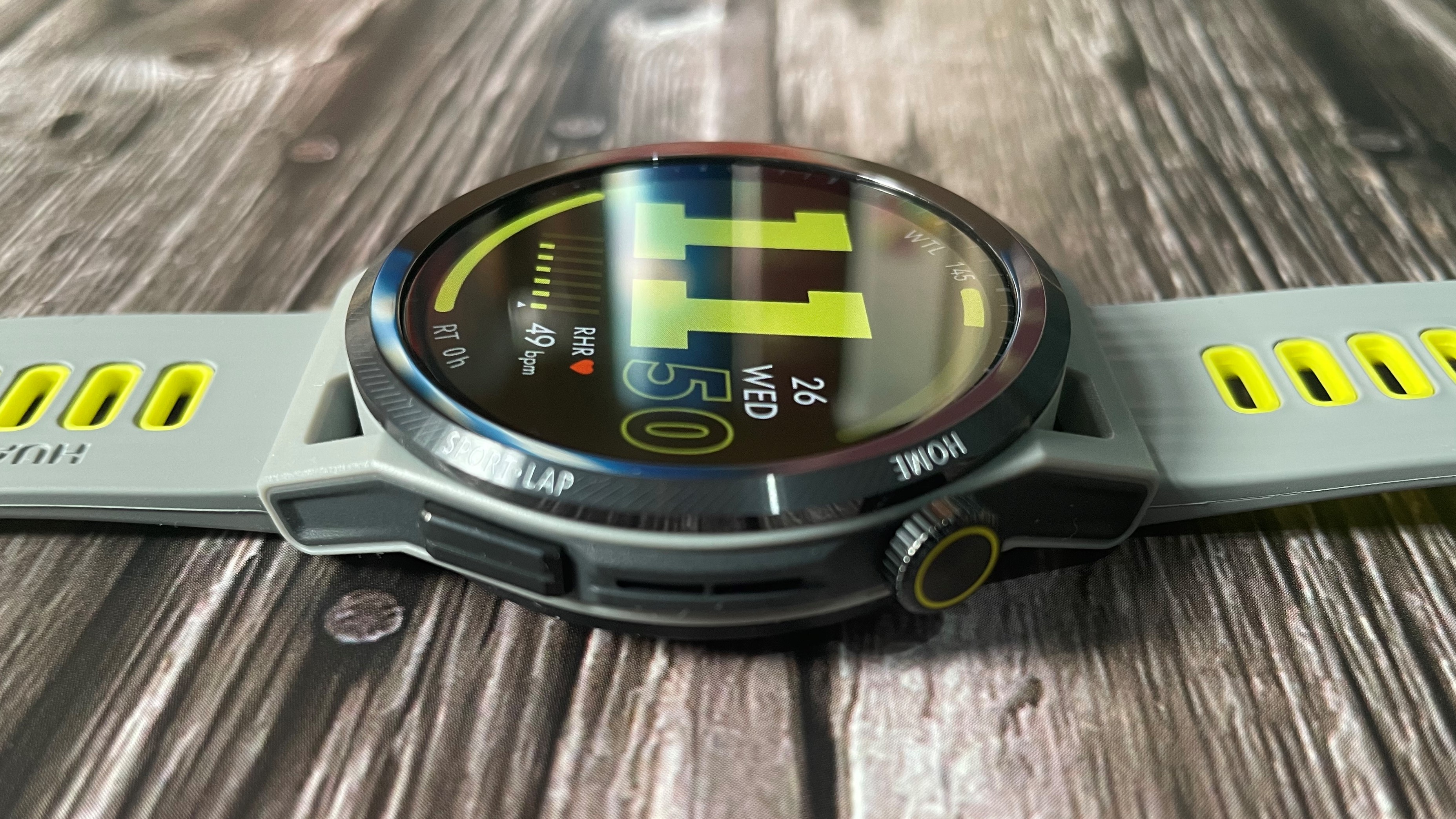
You won't be using these physical controls too much though, because the Watch GT Runner also has a great looking 1.43in AMOLED display. It's seriously bright, and responds readily to touch and slide gestures (though it locks during workouts to prevent accidental presses,
The rear of the case has been redesigned with a more rounded profile that sits closely against your skin to improve contact with the optical heart rate monitor.
Battery life
- Wireless induction charging
- Battery lasts over two weeks in normal use
The Huawei Watch GT Runner is powered up using the same wireless charging puck as other watches in the series. Just place the watch on top, and it will begin charging automatically with no need for clips or connectors,
Huawei estimates battery life of two weeks in normal use, and in our tests the watch exceeded that significantly. After a week of use, with one tracked workout per day (half of which used the watch's GPS receiver and half of which were indoors), the watch still had 62% charge remaining. That's very impressive; for context, the Garmin Venu 2, which has a similar AMOLED display, has a maximum battery life of 11 days in typical use.
The battery life would have been lowered if we'd enabled automatic SpO2 tracking in the Huawei Health app rather than performing occasional spot checks, but for a mid-range running watch, it's tough to beat.
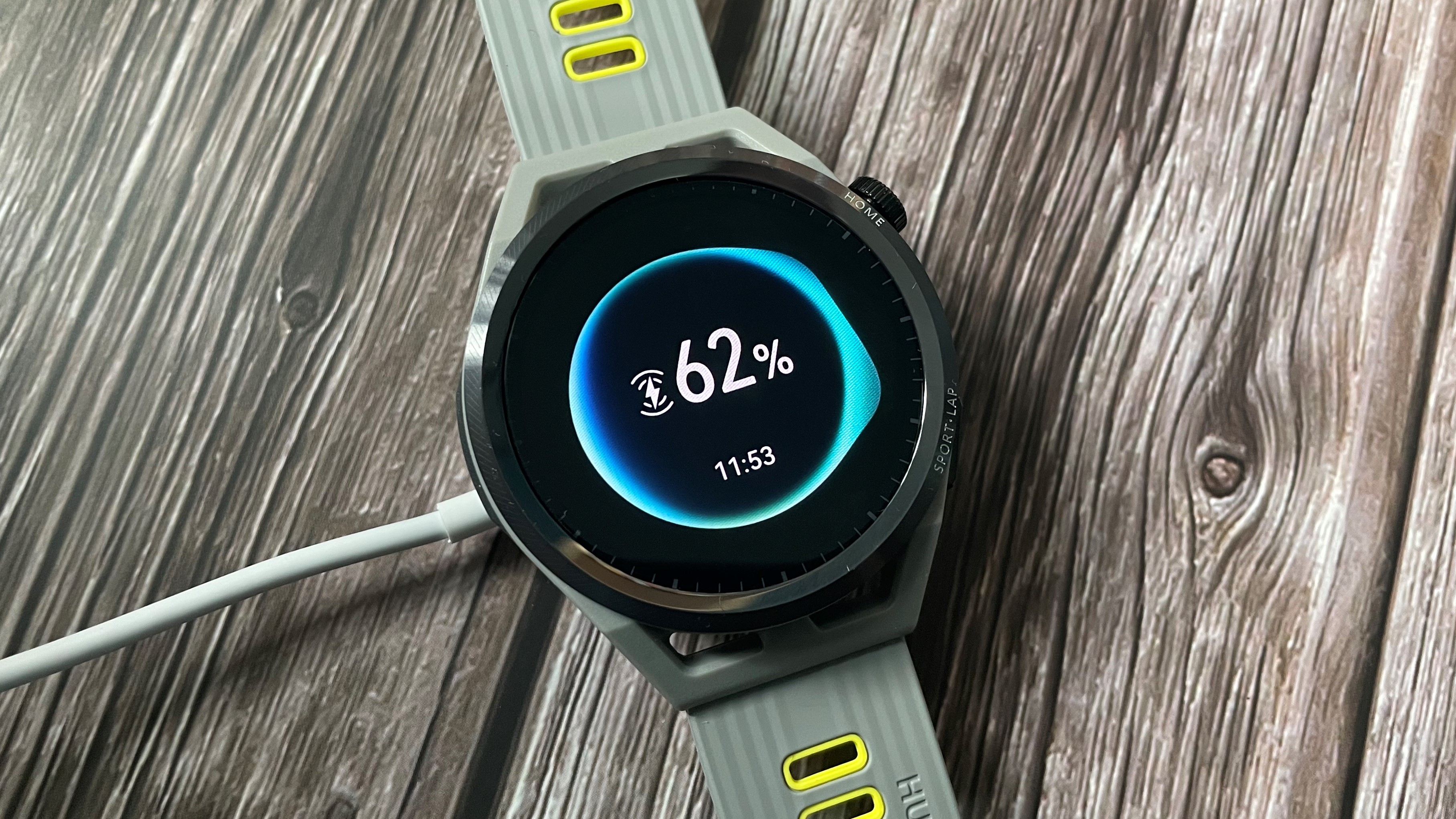
Features
- Extensive health tracking tools
- Make calls from your wrist
- No support for contactless payments
In terms of sensors and everyday tools, the Huawei Watch GT Runner is very similar to the Huawei Watch GT 3. For starters, it's packing the same dual-band location tracking, with support for GPS, Beidou, GLONASS, Galileo and QZSS satellite systems, which allow the watch to better pinpoint your position in areas with limited line of sight between you and the sky. That's particularly beneficial for a watch like this, which you're likely to be using frequently in built-up environments (more on that shortly).
You also get a SpO2 sensor to monitor blood oxygen levels, which is particularly handy if you're using your watch to acclimatize yourself to training at altitude. It's not a medical device though, so although there has been research into the use of smartwatches for predicting the onset of illness, the Watch GT Runner is strictly for sports training. This sensor can be used continuously, just overnight, or to run spot checks post-workout. The choice of options is welcome, particularly if you want to extend battery life.
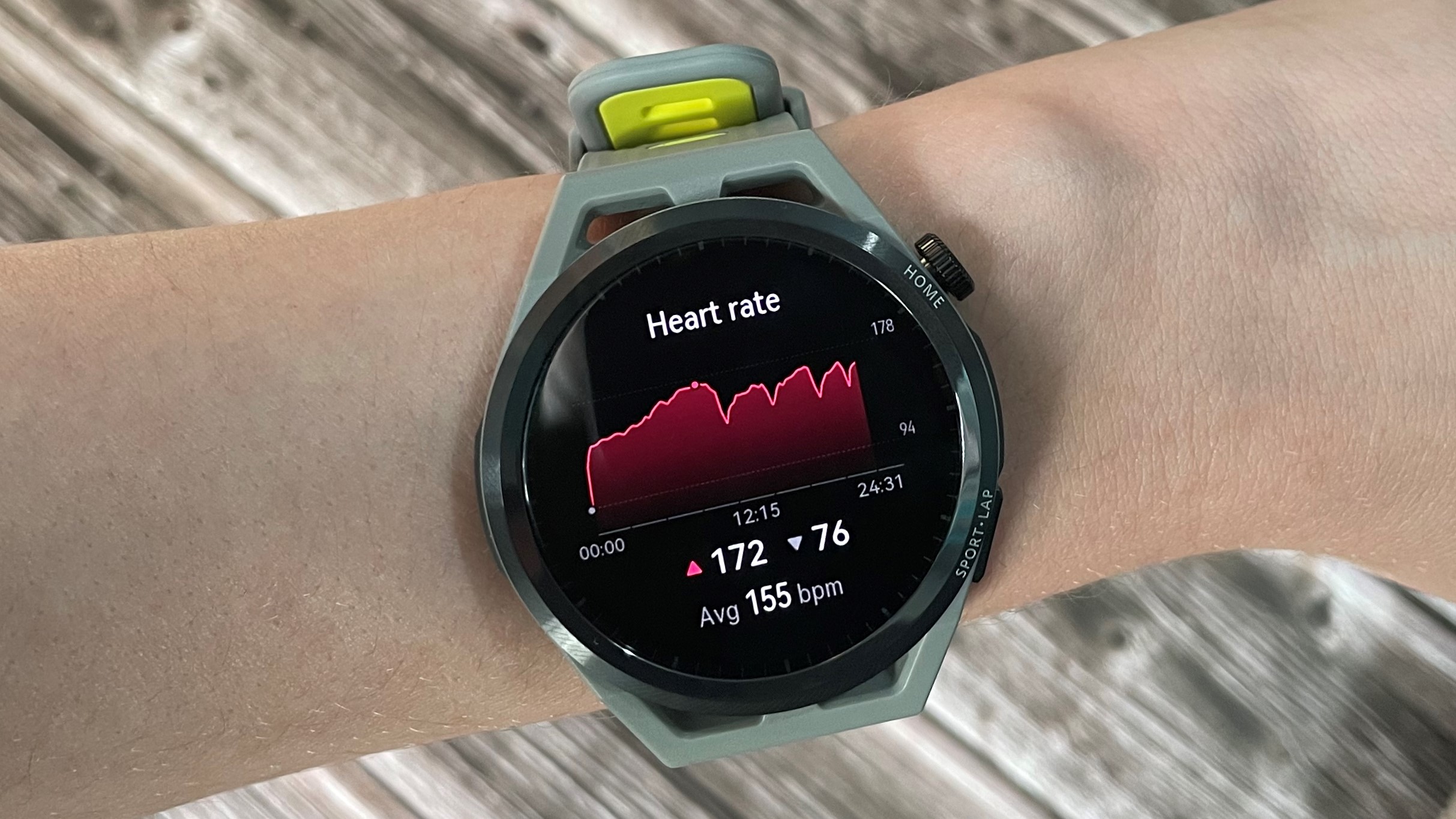
All-day stress tracking is available too (presented as a neat bar chart showing changes in stress over time), and there's a skin temperature sensor (a feature that Apple has yet to implement in its smartwatch at the time of writing). Like the Huawei Watch GT 3, there Watch GT Runner has no ECG sensor to check for signs of atrial fibrillation, but you can choose to set high and low heart rate alerts.
Unlike many sports watches, the Huawei Watch GT Runner allows you to make and receive calls through your wrist (a real boon when you're running outdoors and don't want to reach for your phone). Your handset must be within Bluetooth range, but you don't need to touch it.
A little preparation is necessary, as you can't select people from your phone's full address book. Instead, you have to create a list of 10 favorite contacts using the Huawei Health app. You can then scroll through these using the watch, which also stores call logs in case you need to dial them back.
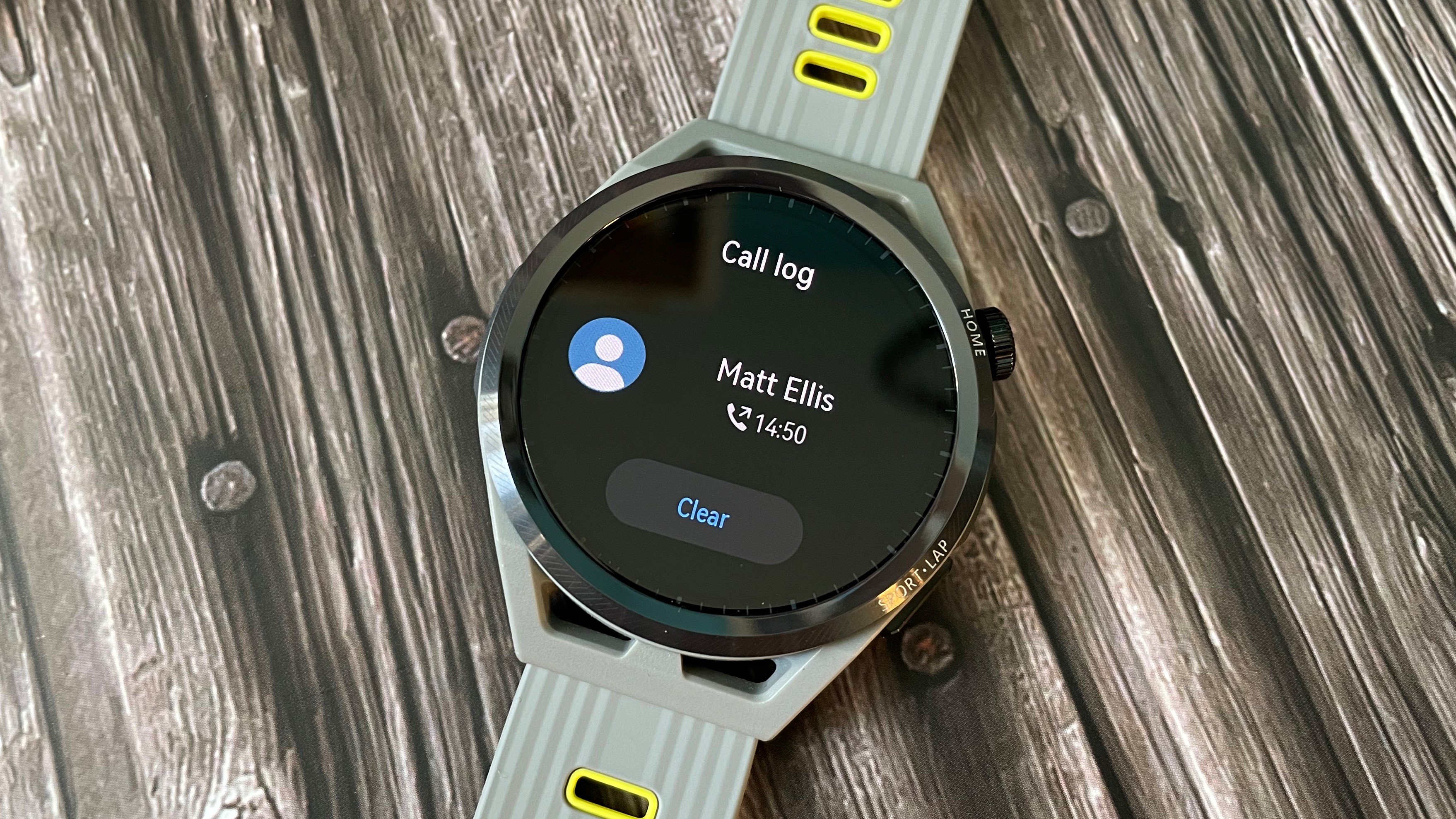
Holding the bottom right button down will allow you to access Huawei's voice assistant, but only if you own one a Huawei phone running EMUI 10.1 or later. If you want to use Google Assistant, Bixby or Siri, the Garmin Venu 2 Plus would be a better choice.
There's no NFC for making contactless payments, either; a Wallet option appears in the Huawei Health app, but the watch doesn't support it. If the convenience of contactless is a key sticking point for you, Google Pay and Apple Pay are still the two most widely supported services, so either an Apple Watch or a device running Google Wear OS would be your best option.
Fitness tracking
- Great range of supported activities
- Accurate, responsive heart rate monitoring
- Race time predictions are overly ambitious
Sports tracking is where the Huawei Watch GT Runner really excels (its fitness tools were developed and refined in the company's dedicated sports labs), and despite the name, it's not just for those who enjoy pounding the pavements or the treadmill. The watch has tracking modes for over 100 activities, from hiking to cross-country skiing, and offers auto-detect for running, walking, cross-trainers, and rowing machines. These settings don't all just record time and heart rate either; the rope skipping mode, for example, will track the number of jumps completed, and allows you to set a target for either jumps or time.
The watch's bright AMOLED display really comes into its own during workout tracking, and although there's an optional always-on mode, while running and cycling we found its accelerometer was sensitive enough to always detect when we raised our wrist to check the stats (something not all sports watches can do reliably).
Don't want to raise your hand? You can also opt to receive spoken notifications during workouts, alerting you to your current distance, pace, and heart rate. The North American-accented voice is clear and distinct, even in a busy gym or street, making it easy to track when you're moving between heart rate zones, and decide whether to adjust your pace.
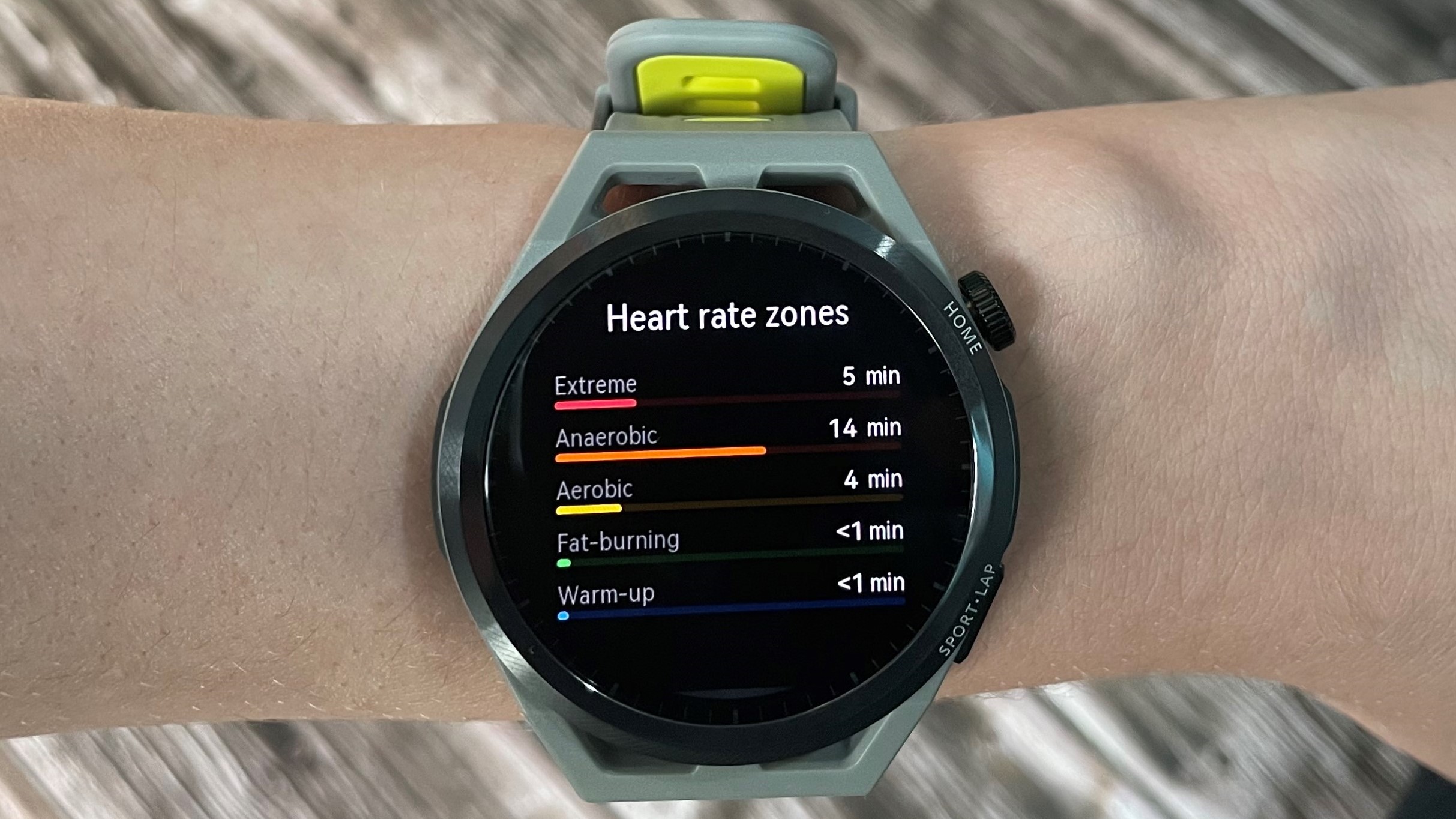
When it came to heart rate monitoring, the Huawei Watch GT Runner didn't record any unusual peaks or troughs, and its measurements were only about 2bpm different from those recorded by the Garmin Fenix 7. However, there were some interesting differences between the two. For instance, when provided with the same set of workout data, Huawei Health calculated a very different VO2 Max to Garmin Connect.
Huawei calculates VO2 Max using speed and heart rate, whereas the FirstBeat algorithm used by Garmin also factors in stats such as age. In our tests, Garmin gave us a VO2 Max of 51, while Huawei's was 55. Without a laboratory analysis it's not possible to say which of these is more accurate, but it's probably best to interpret these measurements as an overall trend rather than an absolute value.
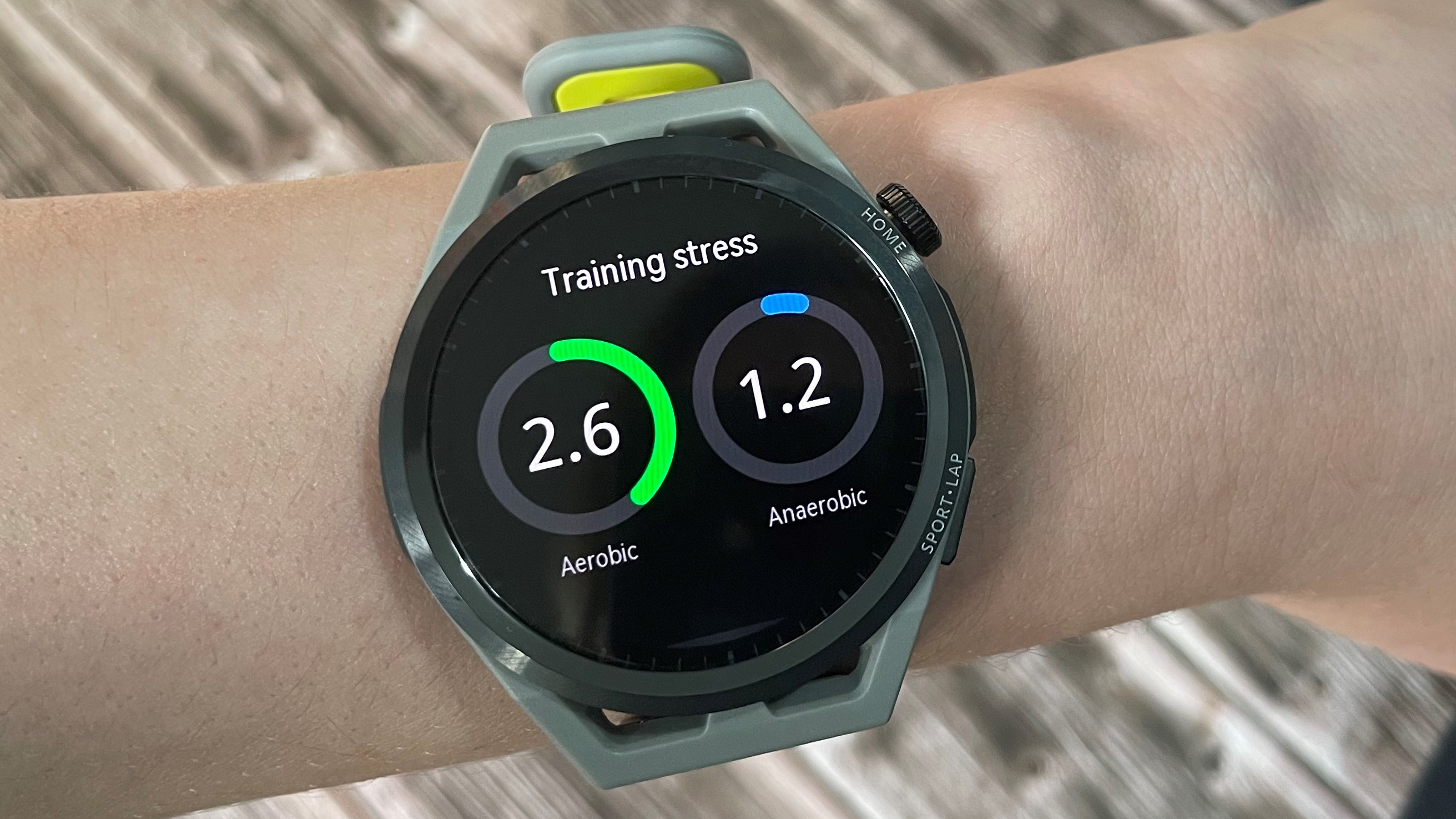
This difference in methodology also explains the differences in Garmin and Huawei's predicted race paces, which are based on current fitness levels.
In our tests, we found that that Huawei's calculated times were overly ambitious – particularly for longer distances. We worked out wearing both the Huawei Watch GT Runner and the Garmin Fenix 7 (one on each wrist), and received two very different sets of figures. We very much doubt we'd be able to match Huawei's predictions, particularly at longer distances. Eight minutes is a long time in a half marathon, and it's very unlikely that we could knock that much off our time at our current level of fitness.
| Distance | Huawei Health | Garmin Connect |
|---|---|---|
| 5km | 0:21:56 | 0:22:44 |
| 10km | 0:45:27 | 0:50.02 |
| Half marathon | 1:41:15 | 1:57:31 |
| Marathon | 3:34:55 | 4:28:02 |
We did, however, appreciate the Huawei Watch GT Runner's tools for tracking and managing training load. These features help runners (particularly new ones) avoid under- or over-training, and assess whether they're working at the right intensity. All the guidance is available in graphical format right on your wrist when you swipe down from the main watch face.
Sleep tracking is also implemented well, and the Huawei Watch GT Runner accurately detected the moment we fell asleep and woke rather than starting to log the moment we settled down for the night. Another excellent feature is the watch's ability to track and log naps in addition to your nocturnal sleep. If you take a nap during the evening you'll be warned that it might have a detrimental effect later on, but they all count towards your rest and recovery metrics.
Recovery times are displayed prominently on the screen after each workout, so you can see how long to wait before your next session and be prepared to tire more quickly if you're still recovering. This it particularly helpful for new runners, who may tend to overdo their training at first.
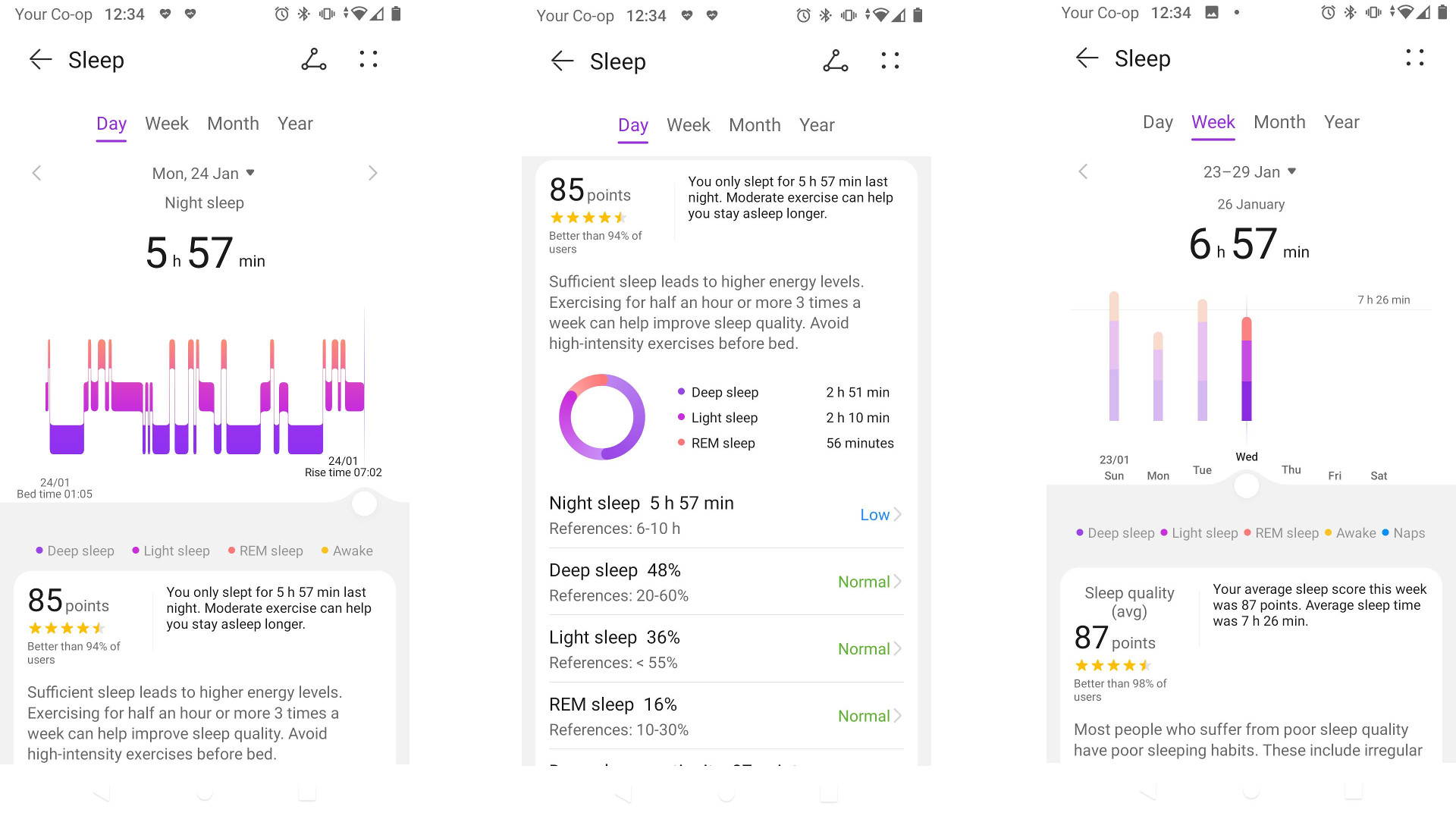
In our 5km running test, the Huawei Watch GT Runner came up 200 meters short. A 4% margin of error is more than we'd expect from a dedicated running watch – particularly one with a design optimized to ensure a quick satellite lock. We usually run in built-up areas, which can pose a challenge for some wearables, but this shouldn't have presented a challenge for a watch with dual-band, five-system satellite location tracking.
We do, however, appreciate the ability to upload routes to the watch through the Huawei Health app, with clear navigation provided on the watch face. You don't get the same detailed maps you do with a Garmin Forerunner 945, for example, but provided you're not planning to stray too far off the beaten path, it's very handy.
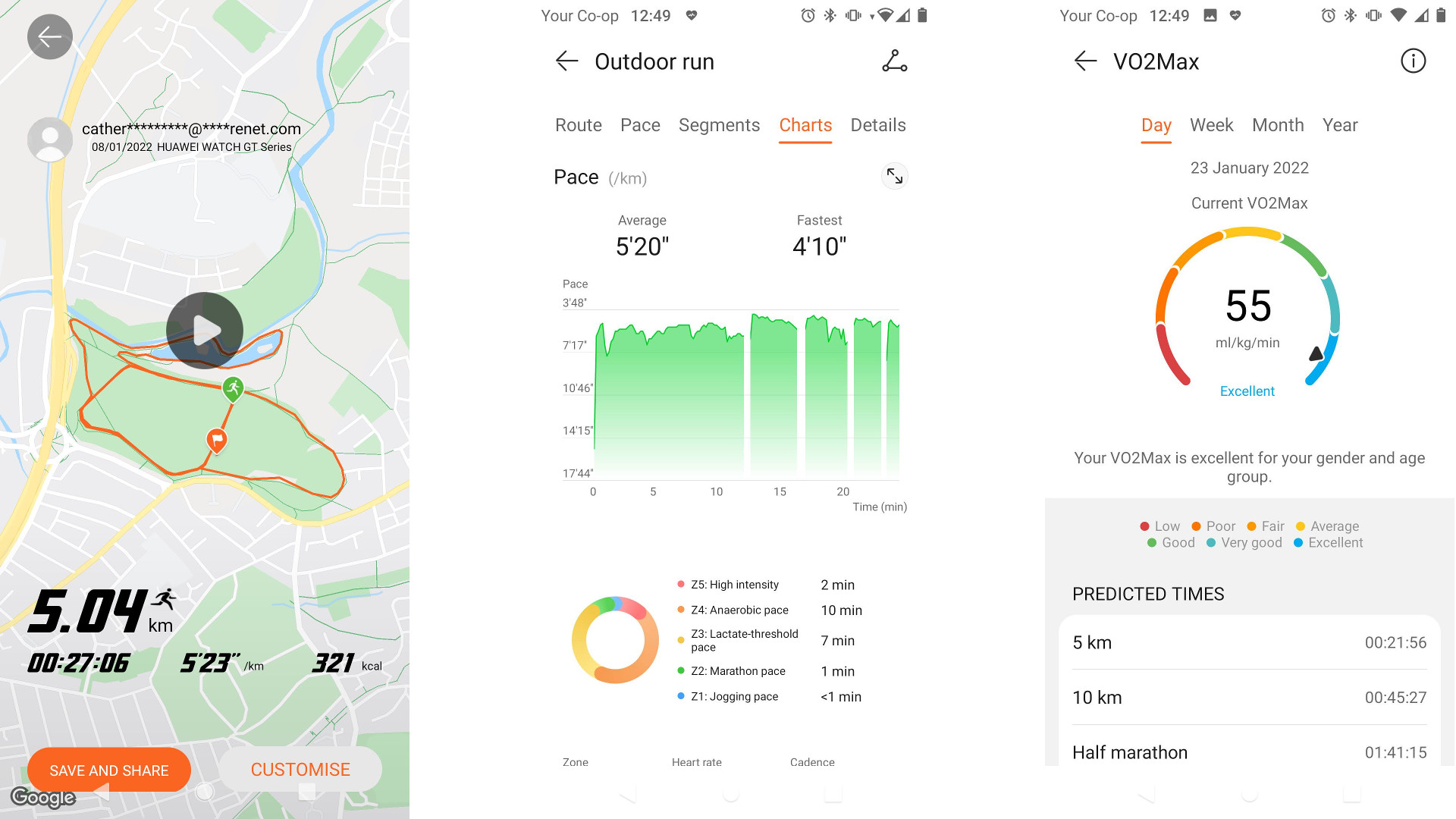
Companion app
- Latest version not available on Google Play
- Lots of watch customization options
- Excellent AI coach tool for new runners
The Huawei Watch GT Runner connects to the Huawei Health smartphone app. This is available for both iOS and Android, but the version available on the Google Store appears not to support Huawei's newest smartwatches, so you'll need to download Huawei AppGallery, and use that to install the latest version of Huawei Health, It's not a huge inconvenience and only has to be done once, but ideally we'd prefer to be able to install all necessary software through Google.
AppGallery is well designed though, and provides automatic updates so you'll always get new Huawei Health features and firmware upgrades for your watch as soon as they land.
Once the Huawei Watch GT Runner is connected (which can be done by either allowing the app to scan for it, or using your phone's camera to capture a QR code on its face), you can use it to download additional watch faces and apps. Many of the faces are paid-for, but at the time of writing, all apps are available to download free. The selection is limited (Garmin and Fitbit both offer many more options) but some, such as the Google Maps app, are well designed and genuinely useful.
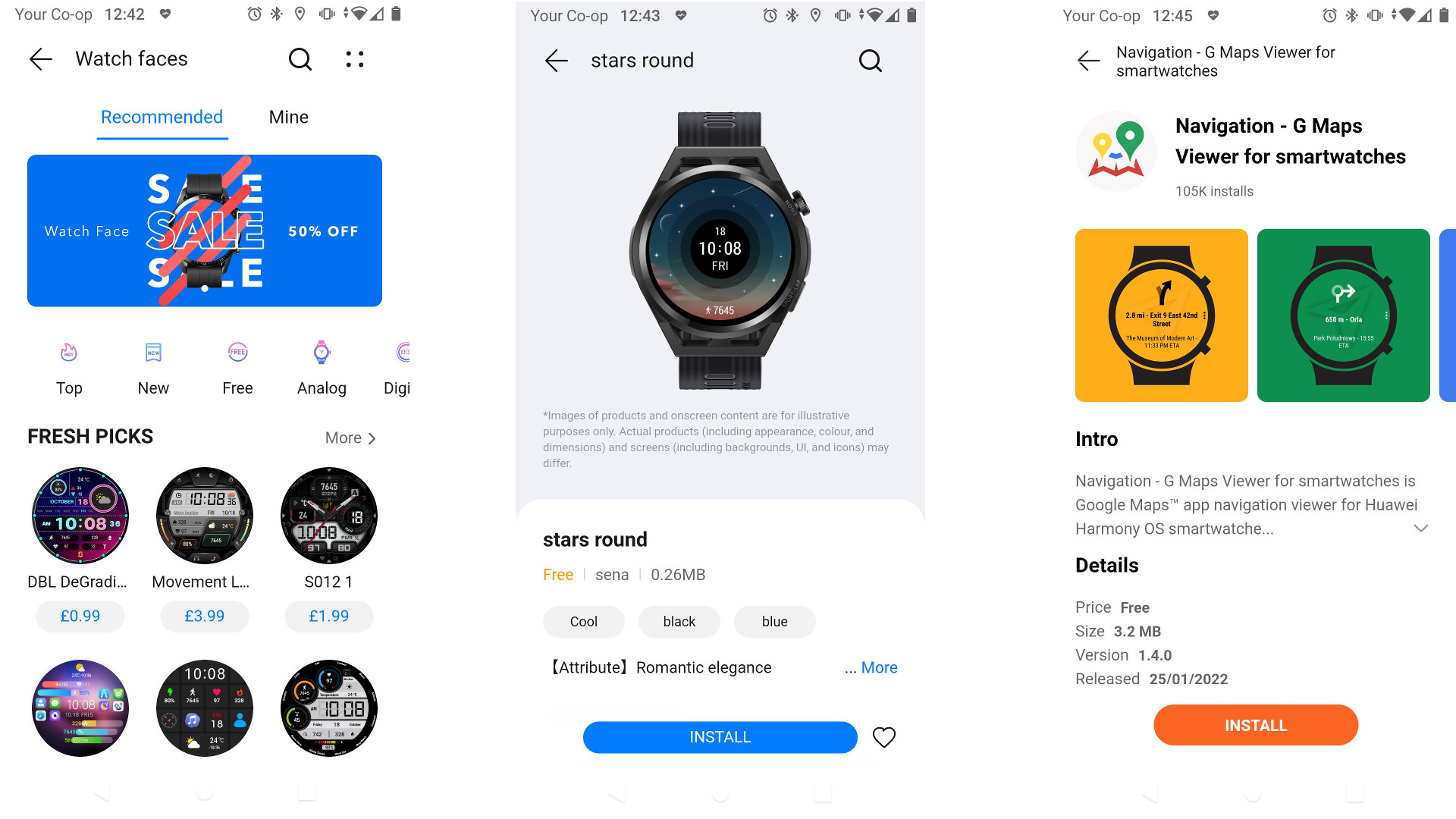
Each time you open the app, you'll find all your daily stats presented in a simple and colorful dashboard. This doesn't contain as much data as the homepage you'll find in Garmin Connect, but if you're more interested in your general wellbeing than drilling down into detailed data, it provides everything you need at a glance.
The Health app is where you'll find one of Huawei's best tools for new runners: the AI Running Coach. This is a tool that will create a personalized training program for you, based on stats including your current times, weight, gender, height, and the goal you're aiming to achieve. You'll be assigned a set of workouts to complete each week, and the plan will adapt on the fly in response to your performance.
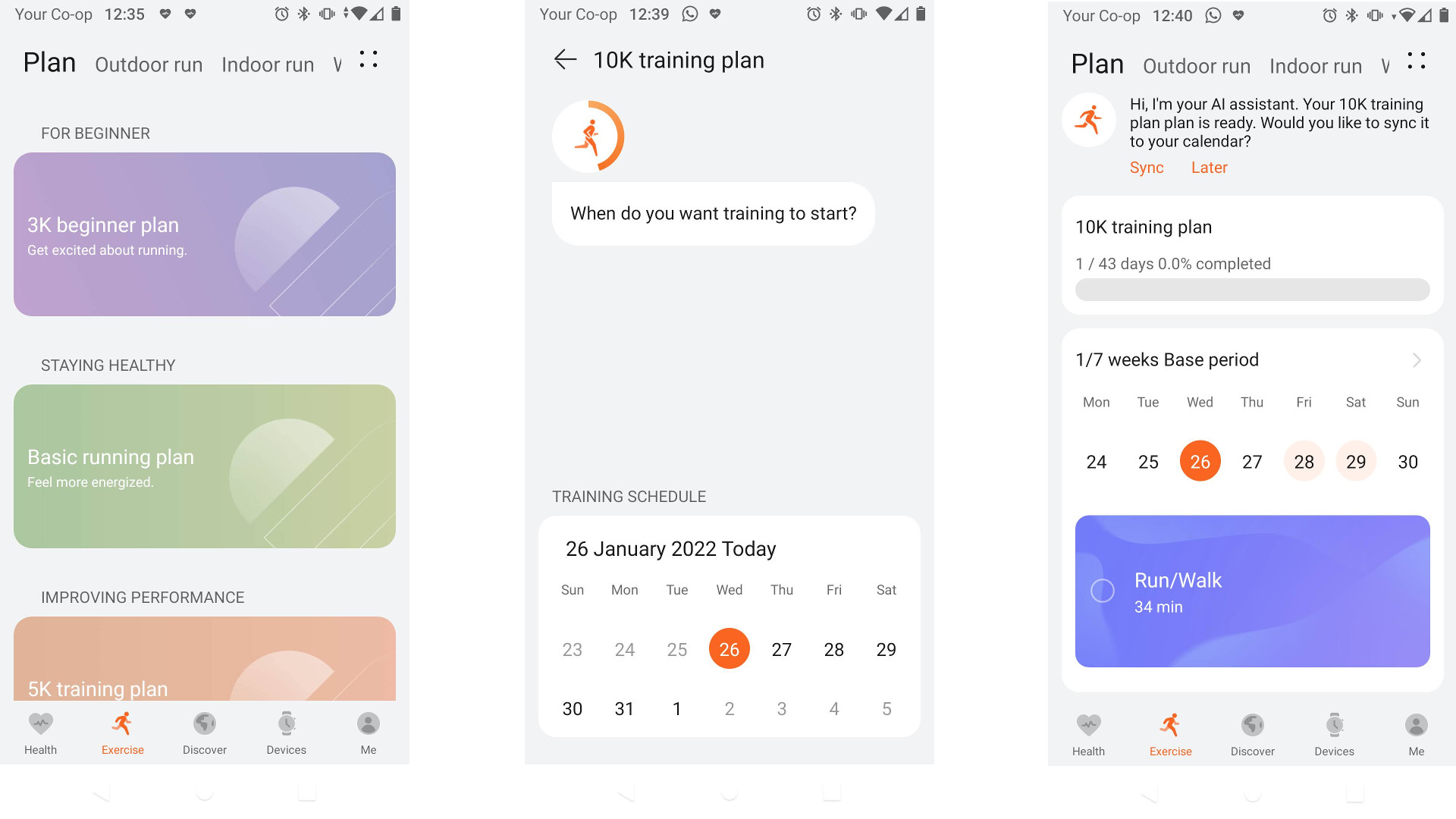
Once set up, this plan will sync with the Huawei Watch GT Runner, and you can use the watch to log each of your training runs. It's a well structured tool that will prove particularly helpful for anyone aiming to run their first 5k or 10k, though the plans for setting a new personal best for a marathon or half-marathon are likely to be less useful. You can't create a plan for an event that's more than three months away, which doesn't give you much time to build up your fitness for a long-distance race.
First reviewed January 2022
Buy it if
You're new to running
Huawei's AI coaching tool is an excellent way to ease you into running, and its adaptable programs give you flexibility that you don't get with typical couch-to-5k programs.
You're stuck in a rut
The Huawei Watch GT Runner will also serve you well if you're running regularly, but not really getting faster. It will help you strike a better balance of rest and recovery, and help you understand how to adjust your training so you can start to see measurable progress.
Don't buy it if
You want to crush your marathon time
The Huawei Watch GT Runner is a solid mid-range running watch, but its training tools aren't as sophisticated as those of a top-end watch from Garmin or Polar, and its adaptive training plans don't extend further than three months ahead.
You want an Apple Watch substitute
As its name implies, the Huawei Watch GT Runner is a sports watch first and foremost. Although it has a decent set of everyday tools, its small selection of third-party apps and absence of NFC payments mean it's not comparable with a fully-fledged watchOS, HarmonyOS or Wear OS smartwatch.
- On a budget? Check out the best cheap running watches
0 comments:
Post a Comment